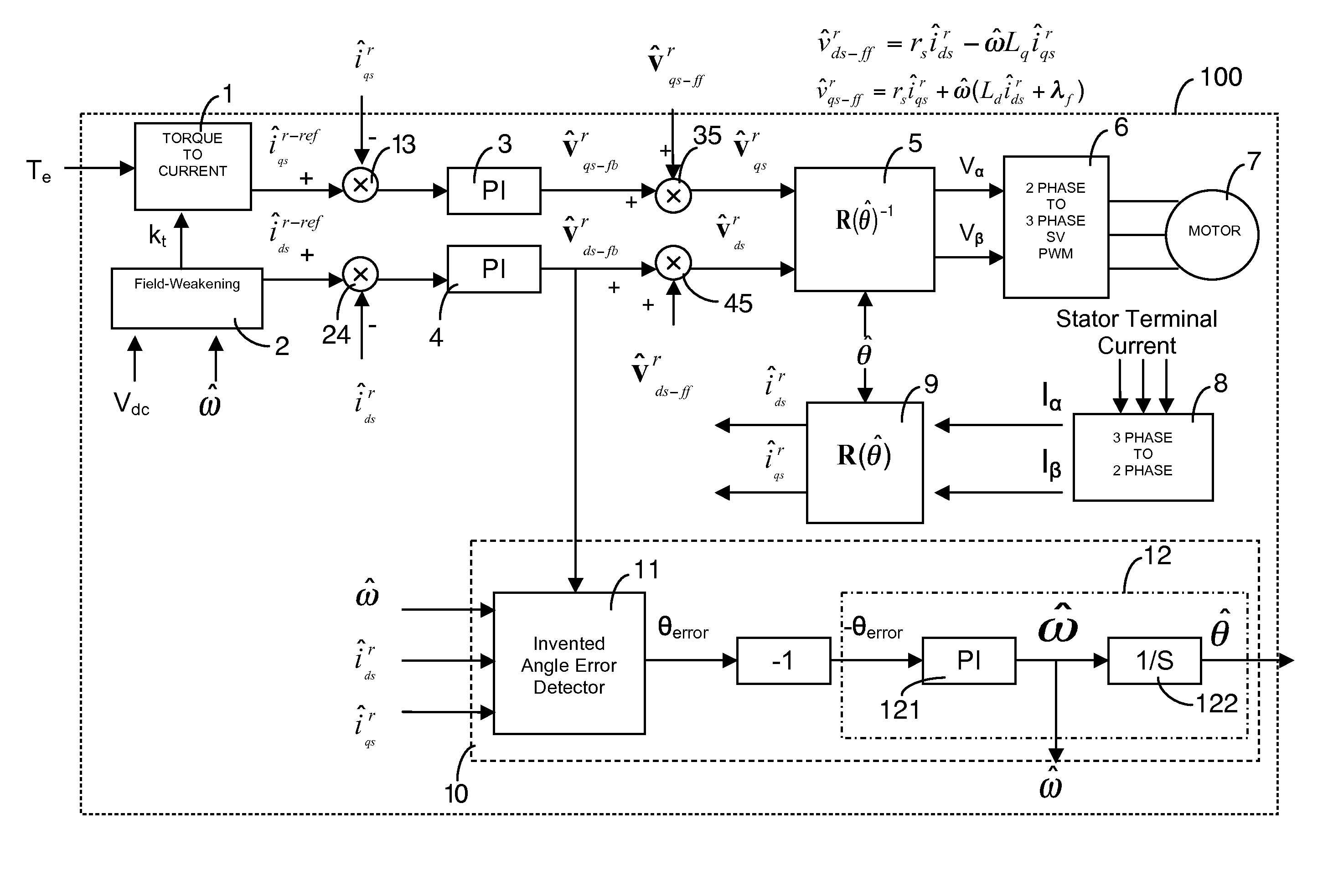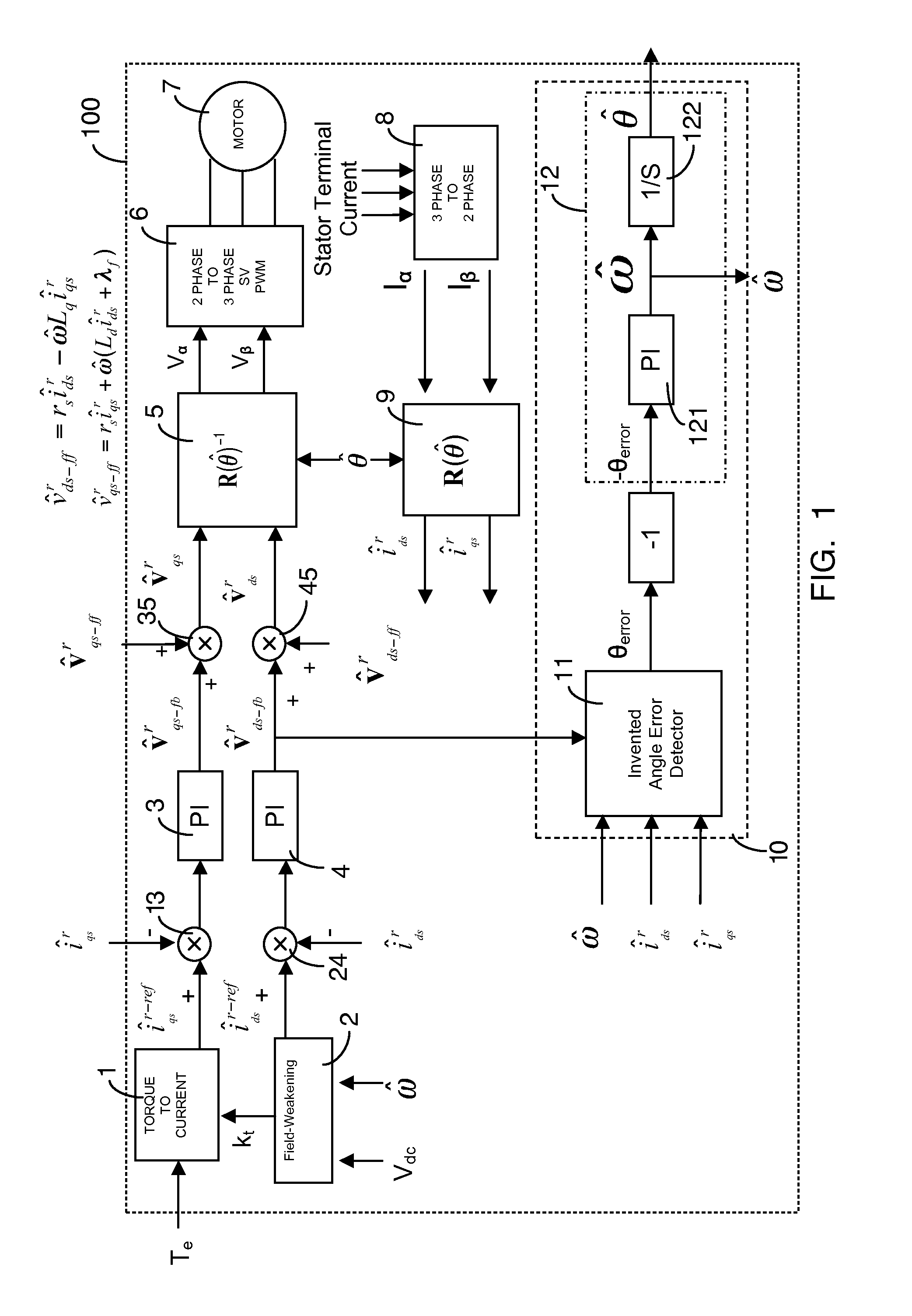Position-sensorless control system and method of operation for a synchronous motor
a synchronous motor and position sensor technology, applied in the direction of motor/generator/converter stopper, dynamo-electric converter control, dynamo-electric gear control, etc., can solve the problems of low reliability, computational complexity, and difficulty in finding feedback devices or sensors for such high operating speeds,
- Summary
- Abstract
- Description
- Claims
- Application Information
AI Technical Summary
Benefits of technology
Problems solved by technology
Method used
Image
Examples
Embodiment Construction
[0022]The present invention is generally directed to a control system for sensorless control of high-speed motors, including synchronous electric motors especially used in high-speed turbo machinery, such as turbo blowers and turbo compressors. Preferably, the control system is used with synchronous electric motors, such as AC synchronous motors, interior permanent magnetic motors, surface permanent magnetic motors, and the like. FIG. 2 illustrates an embodiment for position-sensorless control in accordance with the present invention, wherein a controller is connected to a motor for operation thereof. FIG. 7 illustrates an alternate embodiment for position-sensorless control in accordance with the present invention, wherein a controller is connected to a motor serving as the power train for a blower or compressor.
[0023]FIG. 1 provides a block diagram of a control system 100 configured as a preferred embodiment of the present invention. The sequence of the block diagram represents th...
PUM
 Login to View More
Login to View More Abstract
Description
Claims
Application Information
 Login to View More
Login to View More - R&D
- Intellectual Property
- Life Sciences
- Materials
- Tech Scout
- Unparalleled Data Quality
- Higher Quality Content
- 60% Fewer Hallucinations
Browse by: Latest US Patents, China's latest patents, Technical Efficacy Thesaurus, Application Domain, Technology Topic, Popular Technical Reports.
© 2025 PatSnap. All rights reserved.Legal|Privacy policy|Modern Slavery Act Transparency Statement|Sitemap|About US| Contact US: help@patsnap.com



